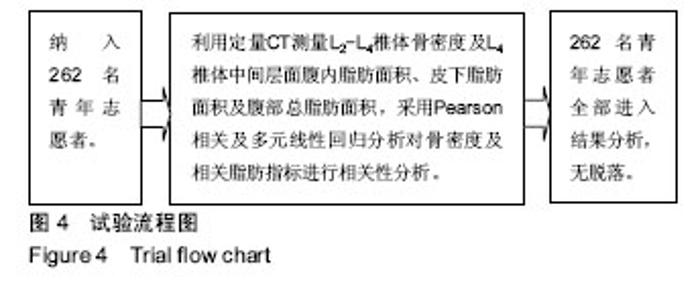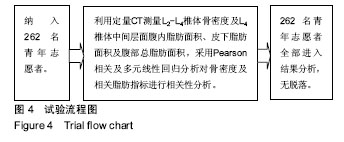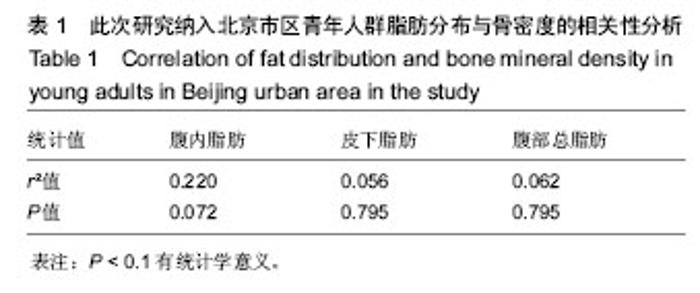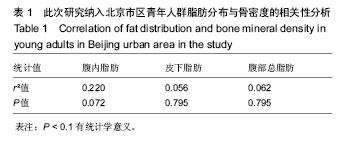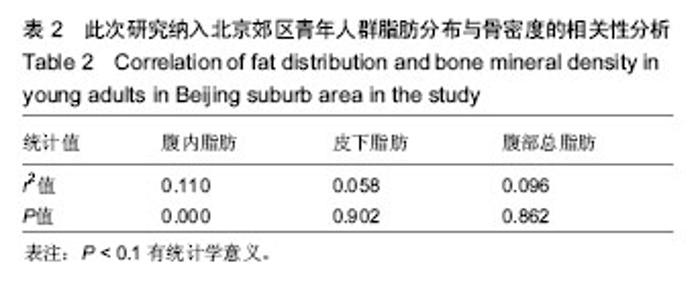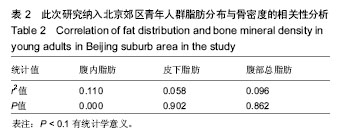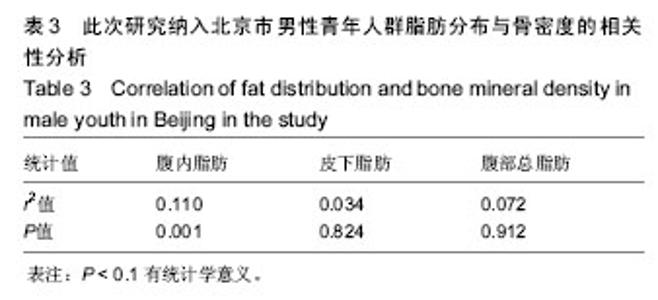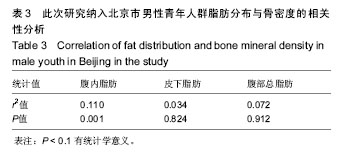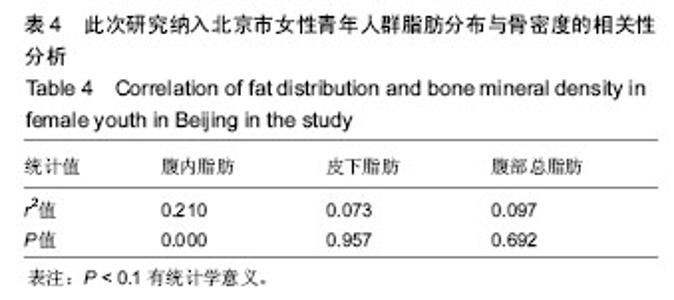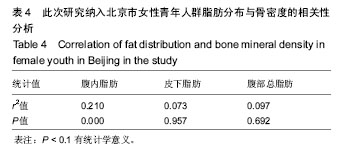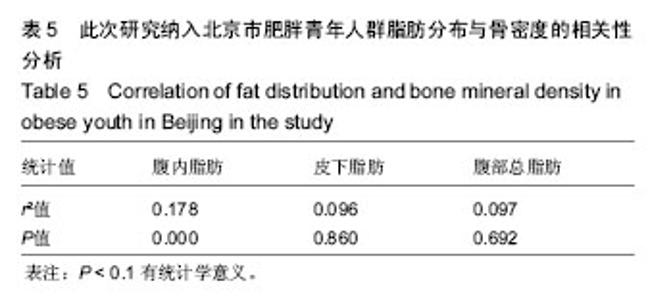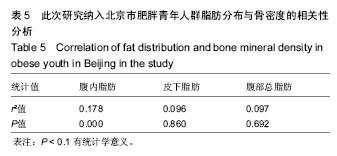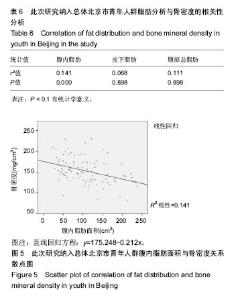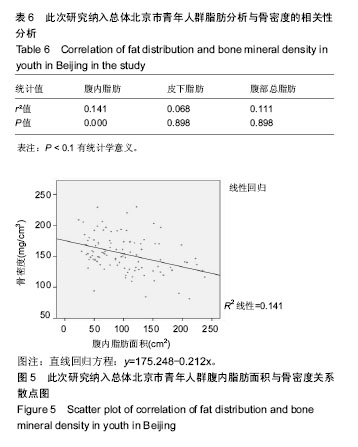| [1] Cosman F, Crittenden DB, Adachi JD, et al. Romosozumab Treatment in Postmenopausal Women with Osteoporosis. N Engl J Med. 2016;375 (16):1532-1543.[2] 杨丽君,吴永华,张俐. 肌少症、骨质疏松症的关系及研究进展[J]. 中国骨质疏松杂志,2017,23(8):1112-1116.[3] 刘灵洁,林芳. 青年肾移植后骨质疏松症的护理[J]. 中国中西医结合肾病杂志, 2011,12(7):634-635.[4] 桂继琮,刘兴党,高光琦. 健康中青年男性体检者骨密度现状研究[J]. 中国骨质疏松杂志,2008,14(10):729-732.[5] Tønnesen R, Schwarz P, Hovind PH, et al. Physical exercise associated with improved BMD independently of sex and vitamin D levels in young adults. Eur J Appl Physiol. 2016;116(7):1297-1304. [6] Wills JW , Long AS , Johnson GE , et al. Empirical analysis of BMD metrics in genetic toxicology part II: in vivo potency comparisons to promote reductions in the use of experimental animals for genetic toxicity assessment. Mutagenesis. 2016;31(3):265-275.[7] 袁淑燕,李彩霞,林贞,等.学龄前儿童骨密度水平变化及环境和膳食等影响因素分析[J]. 医药论坛杂志,2015,36(5):29-30.[8] Lv S, Zhang A, Di W, et al. Assessment of fat distribution and bone quality with trabecular bone score (tbs) in healthy chinese men. Sci Rep. 2016;6: 24935.[9] Kälvesten J, Lui LY , Brismar T, et al. Digital X-ray radiogrammetry in the study of osteoporotic fractures: Comparison to dual energy X-ray absorptiometry and FRAX. Bone. 2016;6:30-35.[10] Zhi-Kai LI, Sha L. Analysis of correlation between lumbar disc herniation and bone mineral density detecting by quantitative CT in elderly patients. Pract Geriatr. 2018.[11] Islamian JP , Garoosi I , Fard KA , et al. Comparison between the MDCT and the DXA scanners in the evaluation of BMD in the lumbar spine densitometry. Egypt J Radiol Nucl Med. 2016; 47(3):961-967.[12] 黄英,张慧,蔡跃,等 缺牙区松质骨密度的定量CT法测量[J]. 中国组织工程研究, 2017,21(36):5775-5780.[13] Wei S, Jianjun Z, Junjie F, et al. Measurement of BMD in lumbar bone with QCT and analysis of BMD value with related laboratory indexes. J Med Imaging. 2018.[14] Hasegawa Y, Ariyasu D, Izawa M, et al. Gradually increasing ethinyl estradiol for Turner syndrome may produce good final height but not ideal BMD. Endocr J.2016; 64(2):221-227.[15] Gába A, Cuberek R, Svoboda Z, et al. The effect of brisk walking on postural stability, bone mineral density, body weight and composition in women over 50 years with a sedentary occupation: a randomized controlled trial. BMC Womens Health. 2016; 16(1):63.[16] Palermo A , Tuccinardi D , Defeudis G , et al. BMI and BMD: the potential interplay between obesity and bone fragility. Int J Environ Res Public Health. 2016;13(6). pii: E544. [17] Choi MJ. Taurine may modulate bone in cholesterol fed estrogen deficiency-induced rats. Adv Exp Med Biol. 2017;975 Pt 2:1093-1102.[18] Soon G, Quintin A, Scalfo F, et al. PIXImus bone densitometer and associated technical measurement issues of skeletal growth in the young rat. Calcif Tissue Int. 2006;78(3):186-192. [19] 孙微,郑建军,方军杰,等. QCT对腰椎BMD值的测量及BMD值与相关实验室指标分析[J]. 医学影像学杂志, 2018,28(1):141-144.[20] Wokke BH, Van Den Bergen JC, Hooijmans MT, et al. T2 relaxation times are increased in skeletal muscle of DMD but not BMD patients. Muscle Nerve. 2016; 53(1):38-43.[21] 宋敏,刘小钰,蒋林博,等. 肌肉微环境与骨质疏松[J]. 中国骨质疏松杂志, 2017,23(12):1654-1659.[22] Ambrose T , Sharkey LM , Louis-Auguste J , et al. Prevalence of low bone mineral density in patients undergoing intestinal or multivisceral transplantation at addenbrooke’s hospital, cambridge. Gut. 2015; 64(Suppl 1):A316.[23] 林慧榕. 福建沿海地区超重及肥胖人群血压、血脂现状分析[J]. 心血管康复医学杂志, 2016,25(1):6-11.[24] 韩雪莉,吴艳,郭华,等. 定量CT测定人体腹部脂肪分布、肝脏脂肪含量与肥胖的相关性[J]. 中国医学影像技术, 2017, 33(s1):90-92.[25] Takeoka A, Tayama J, Yamasaki H, et al. Intra-abdominal fat accumulation is a hypertension risk factor in young adulthood: A cross-sectional study. Medicine. 2016;95(45):e5361. |
